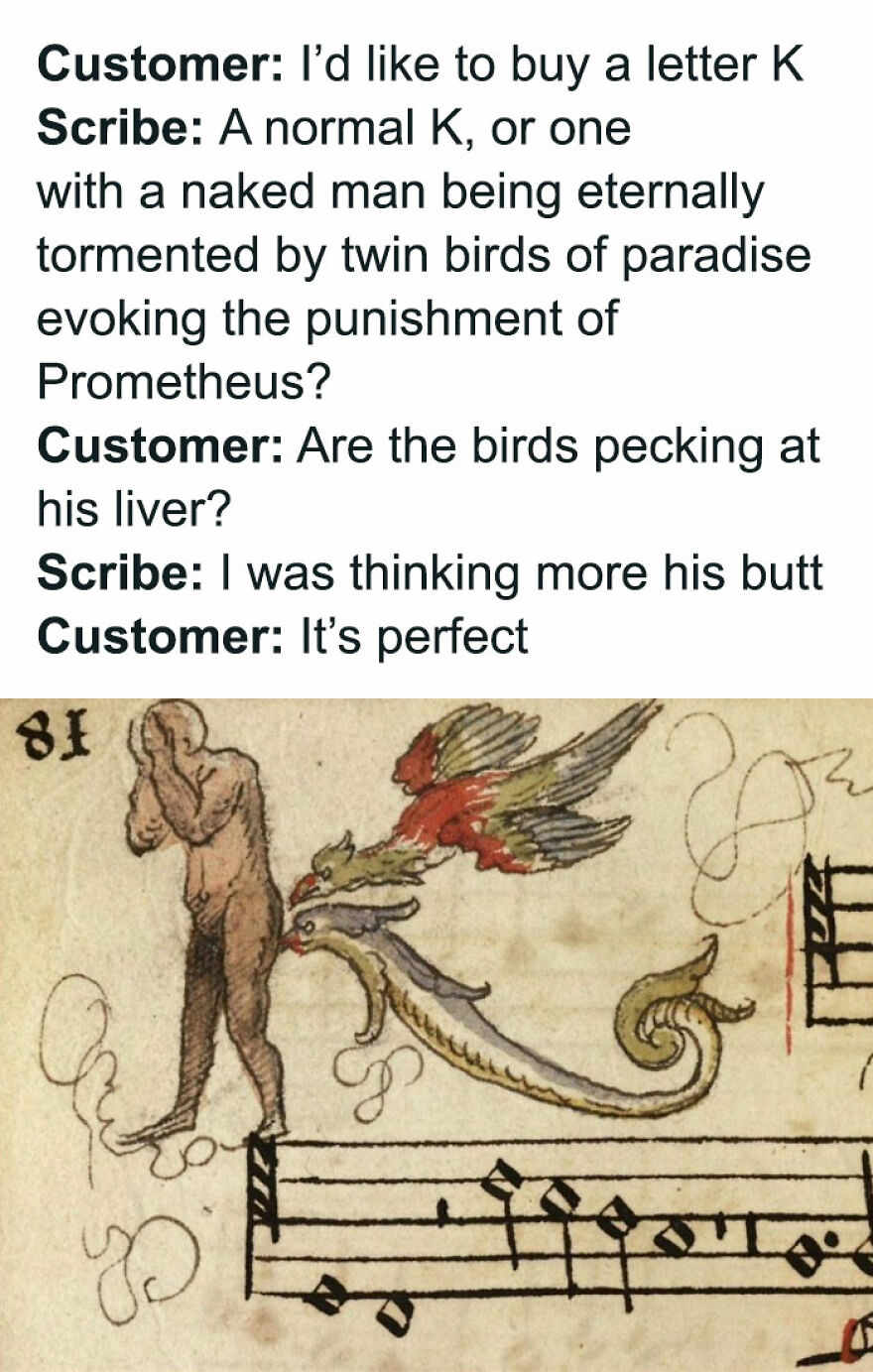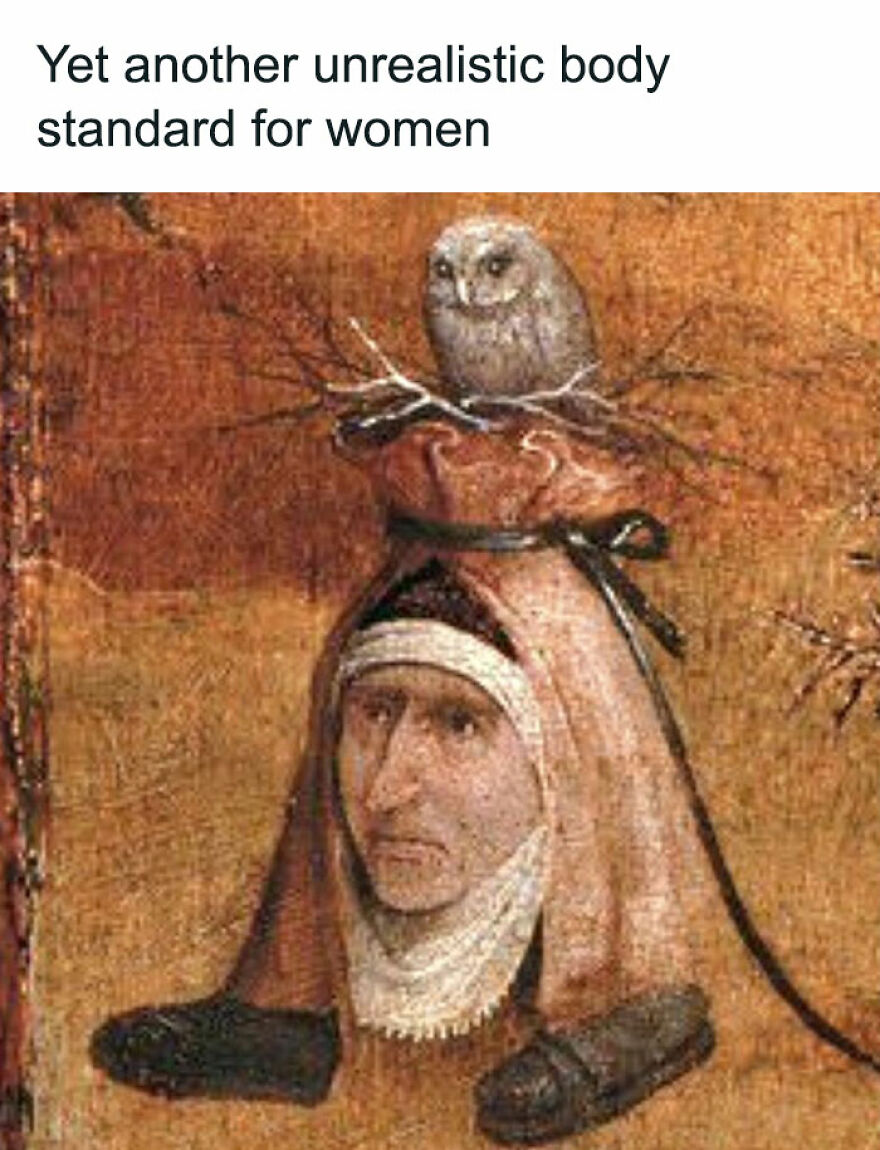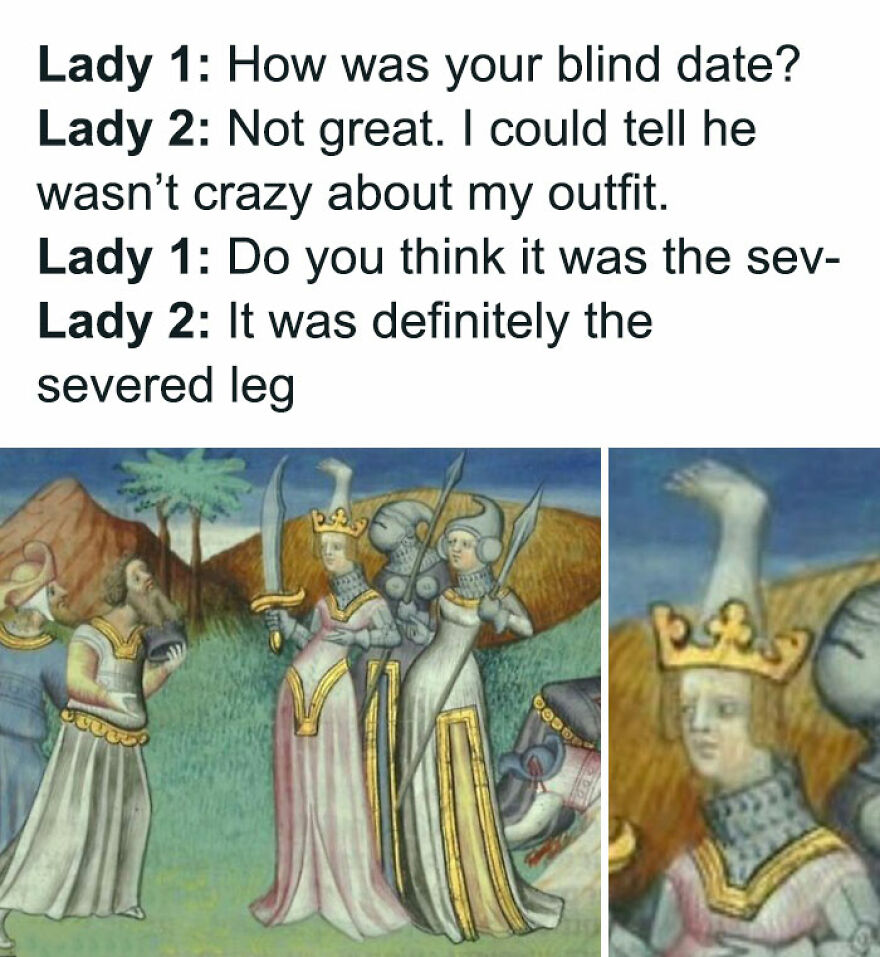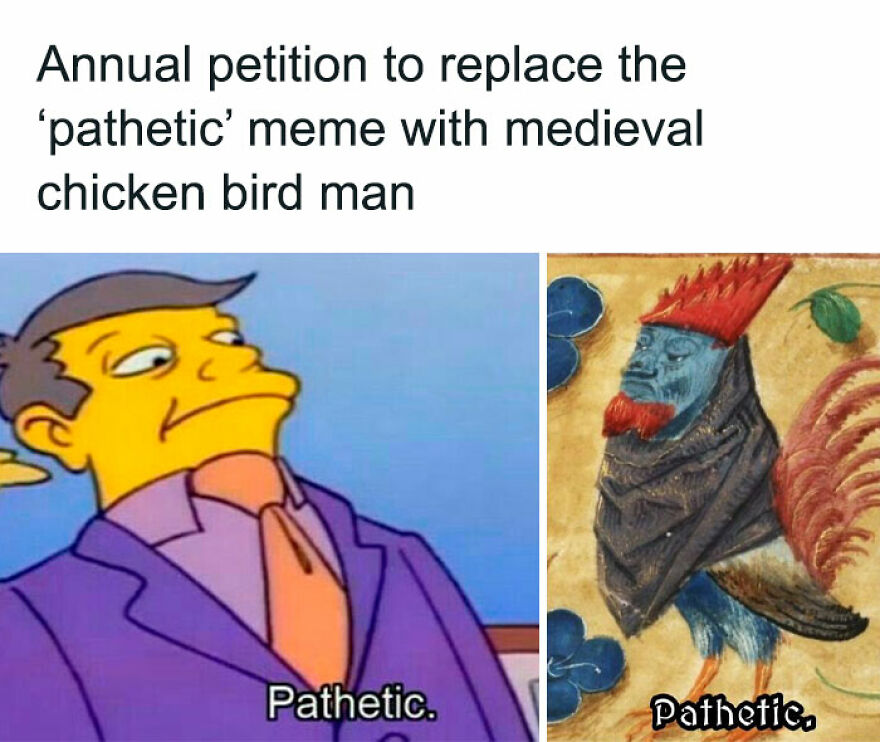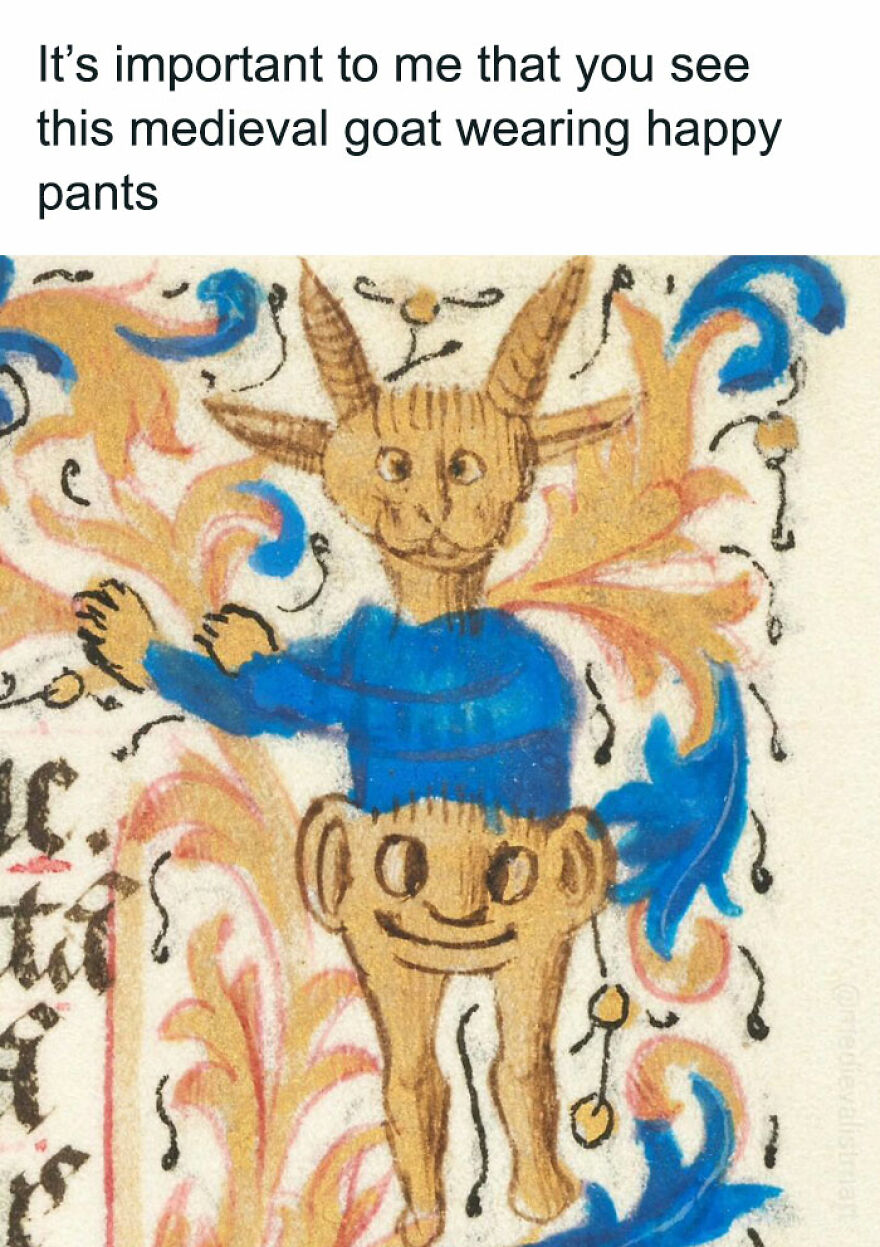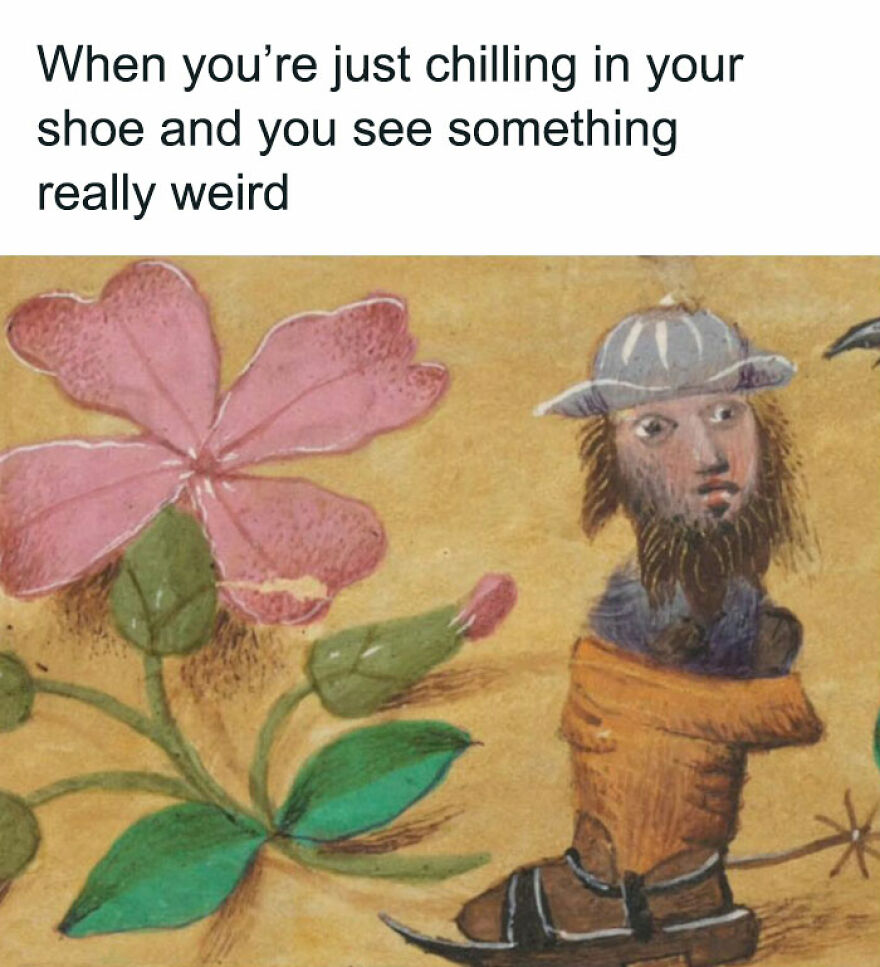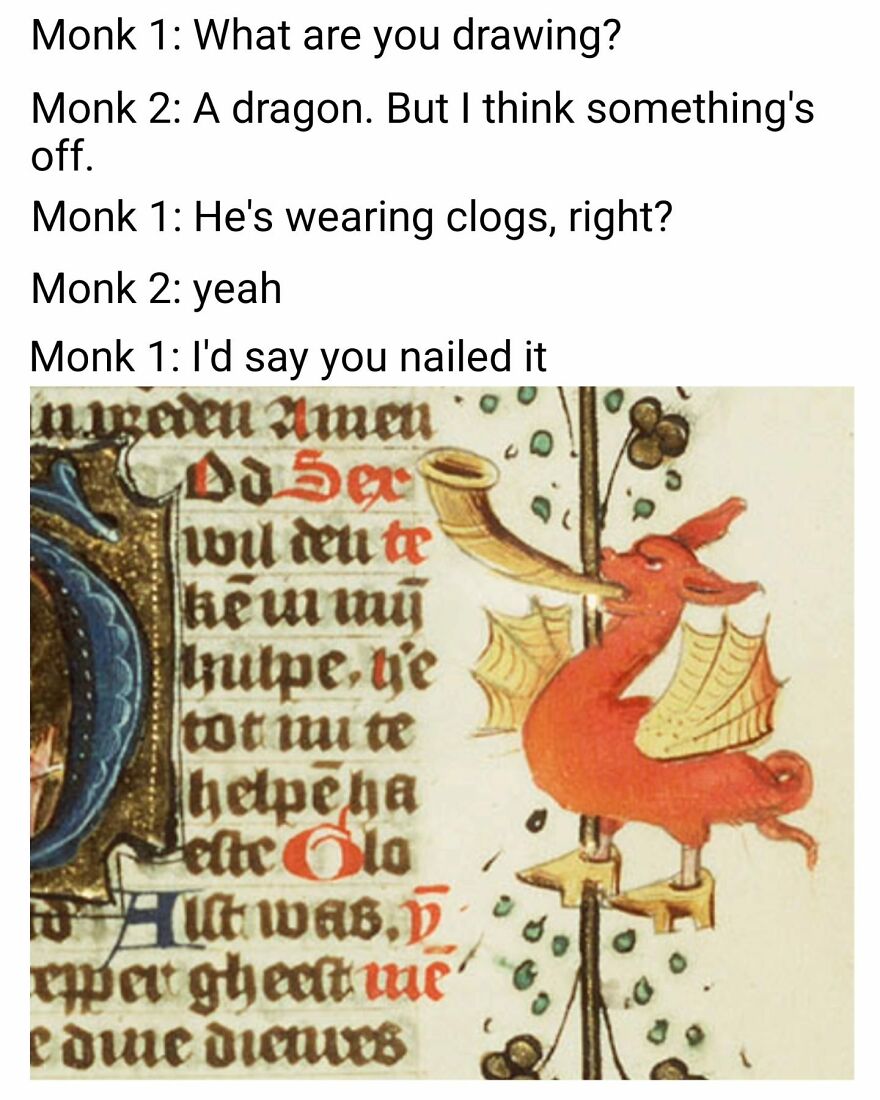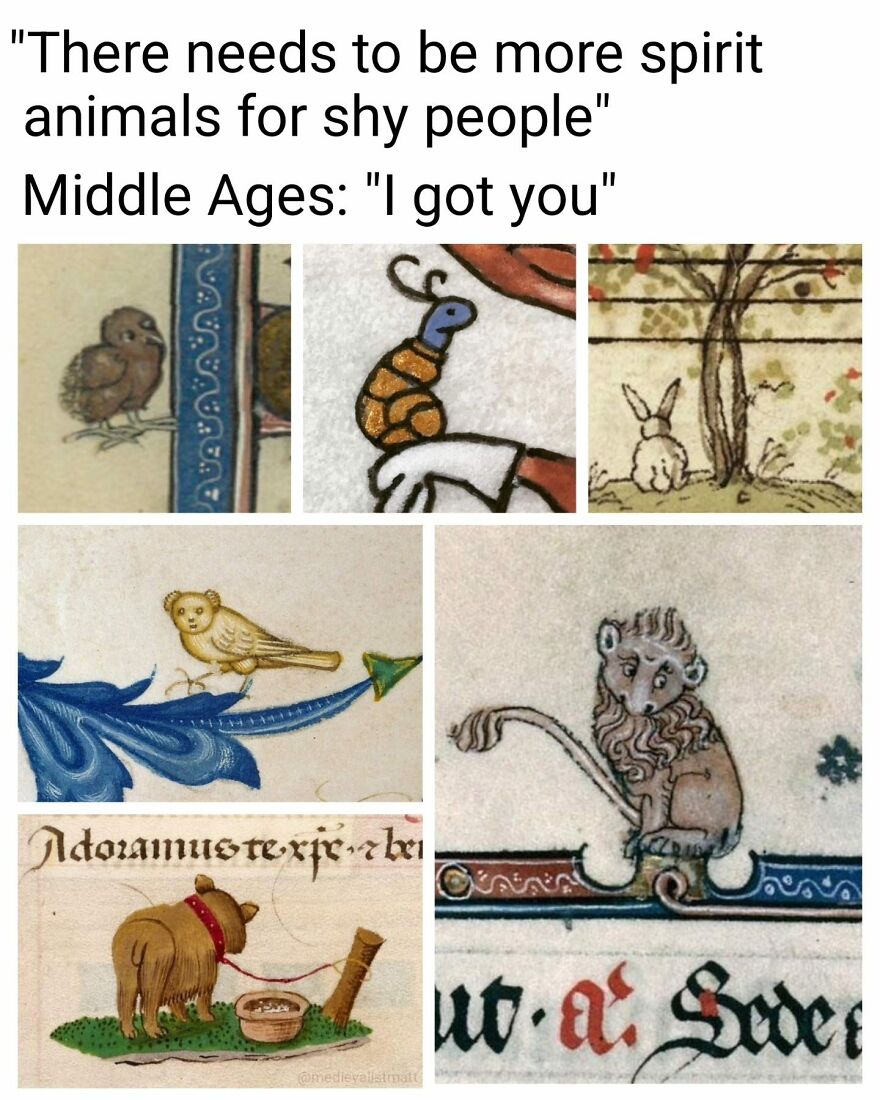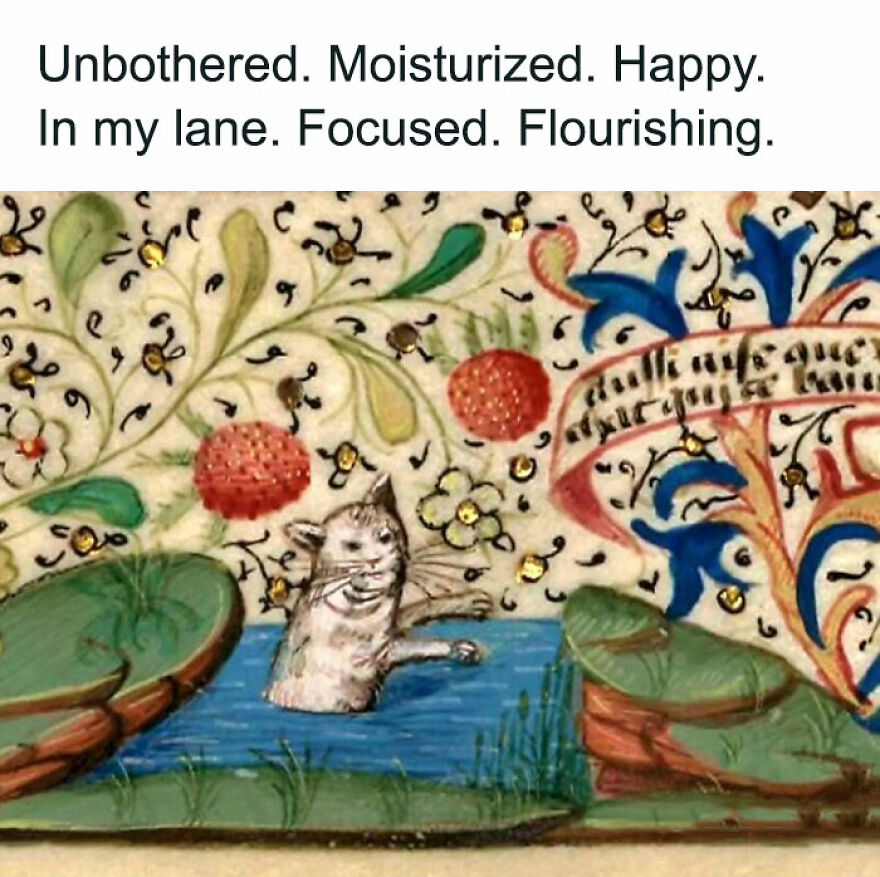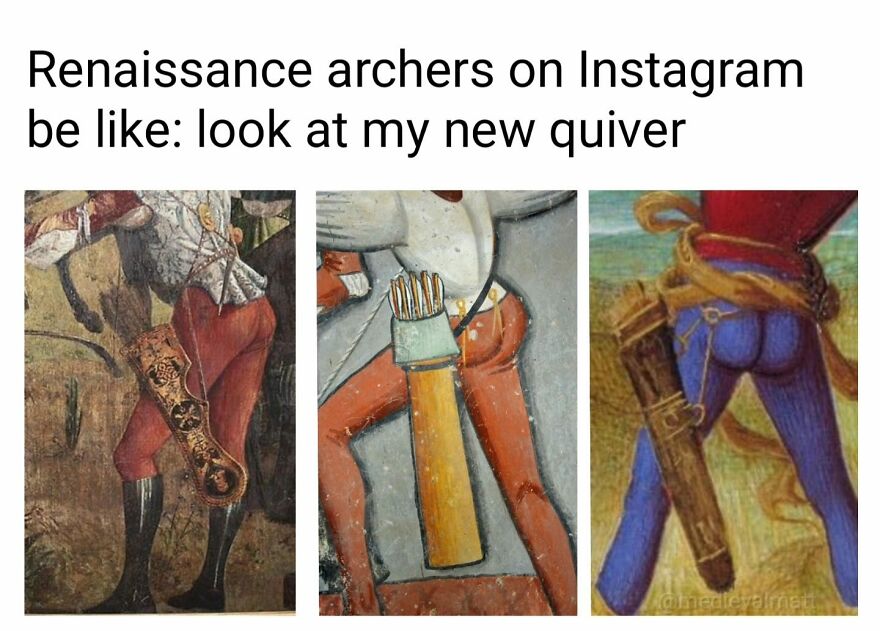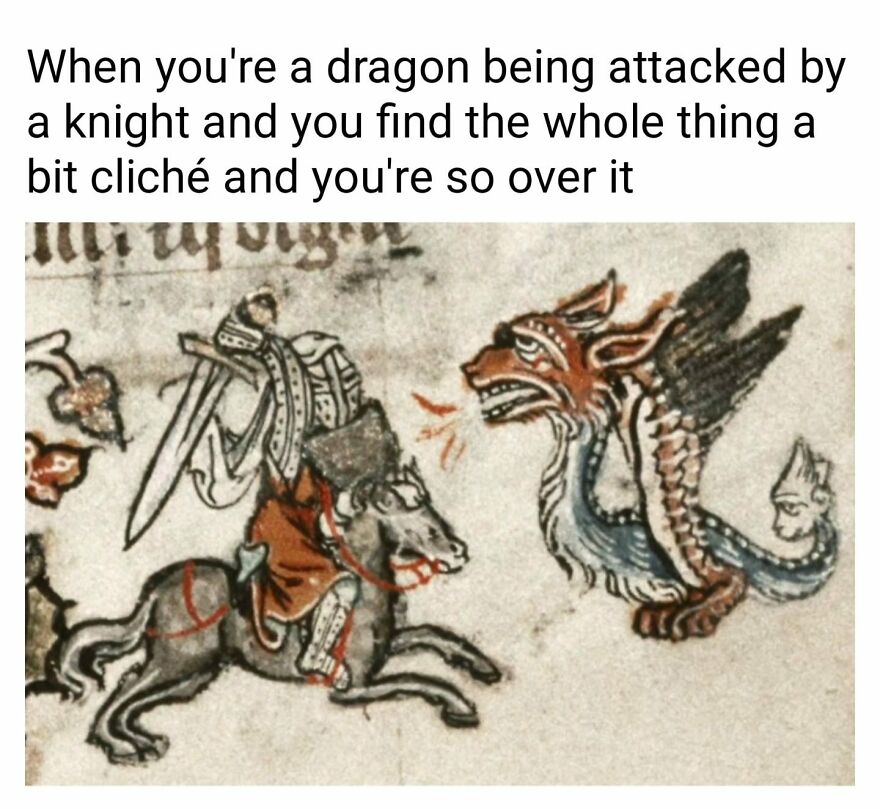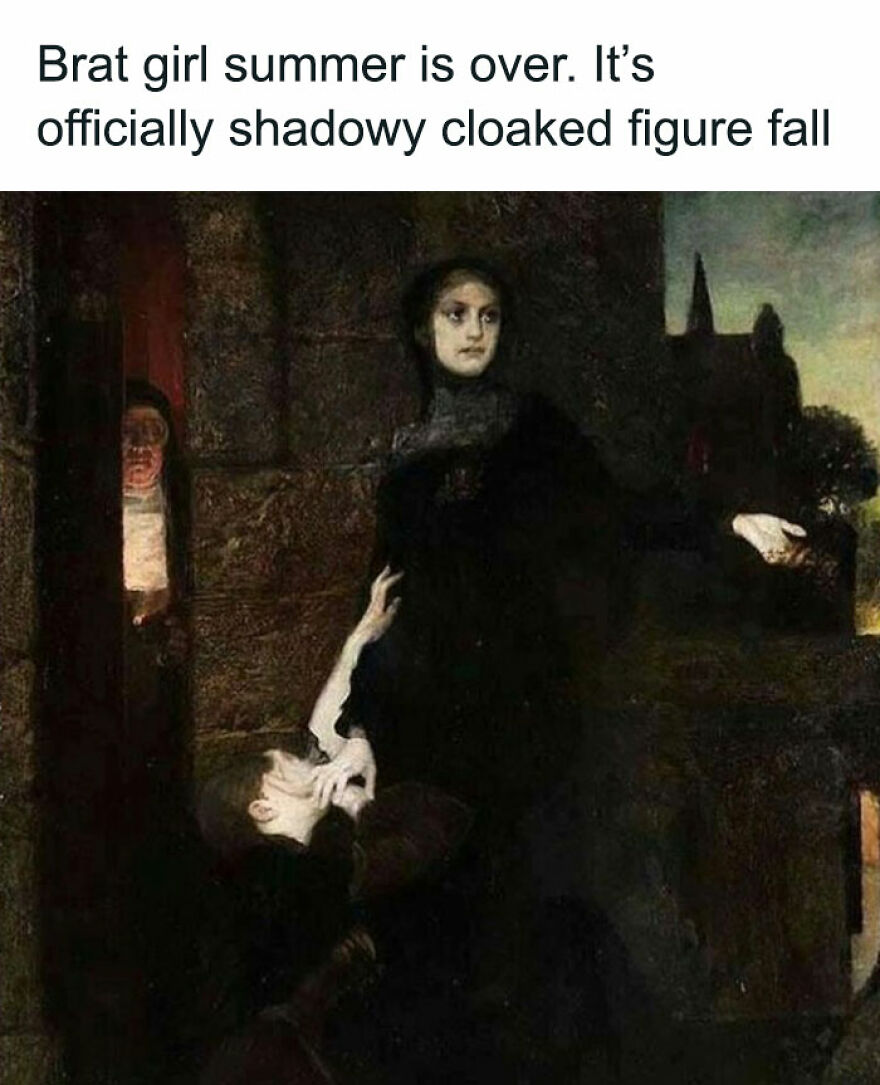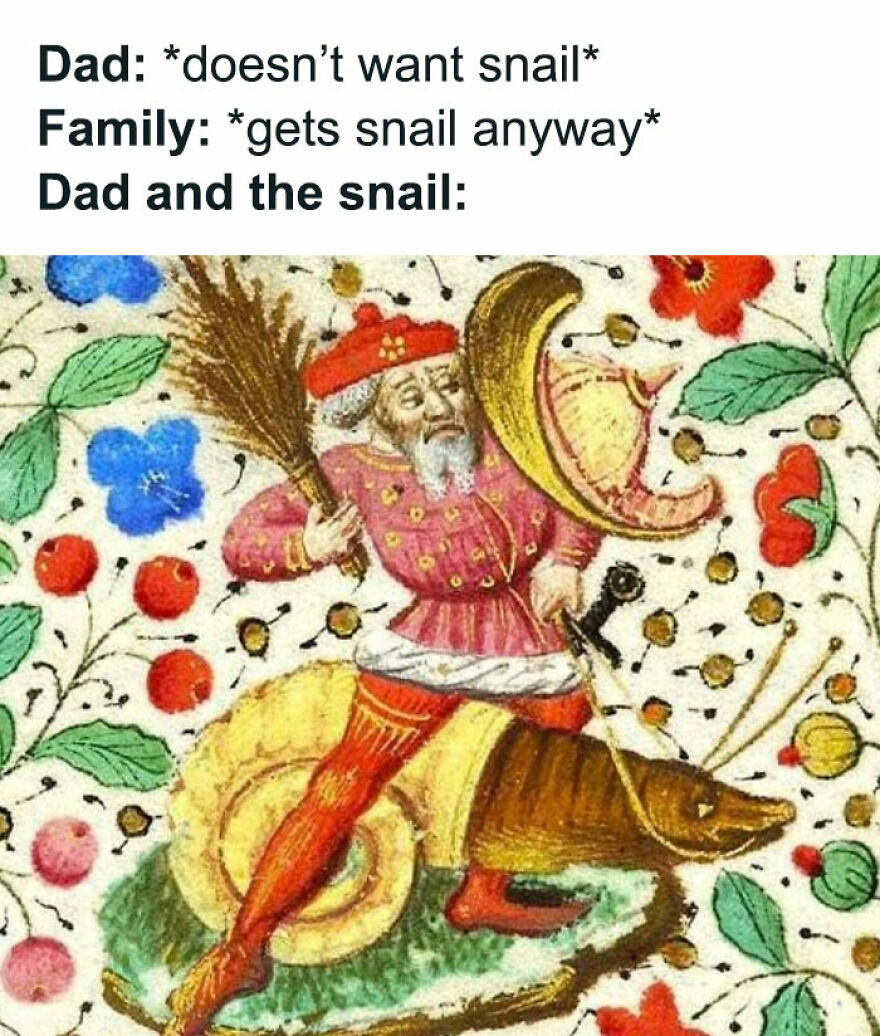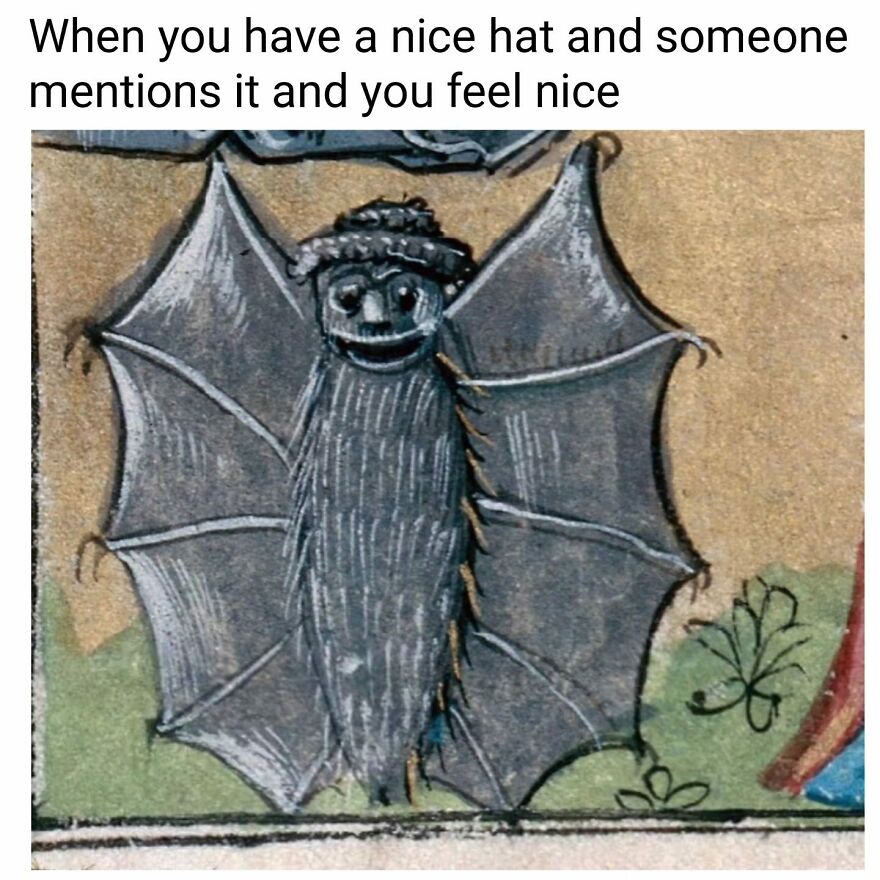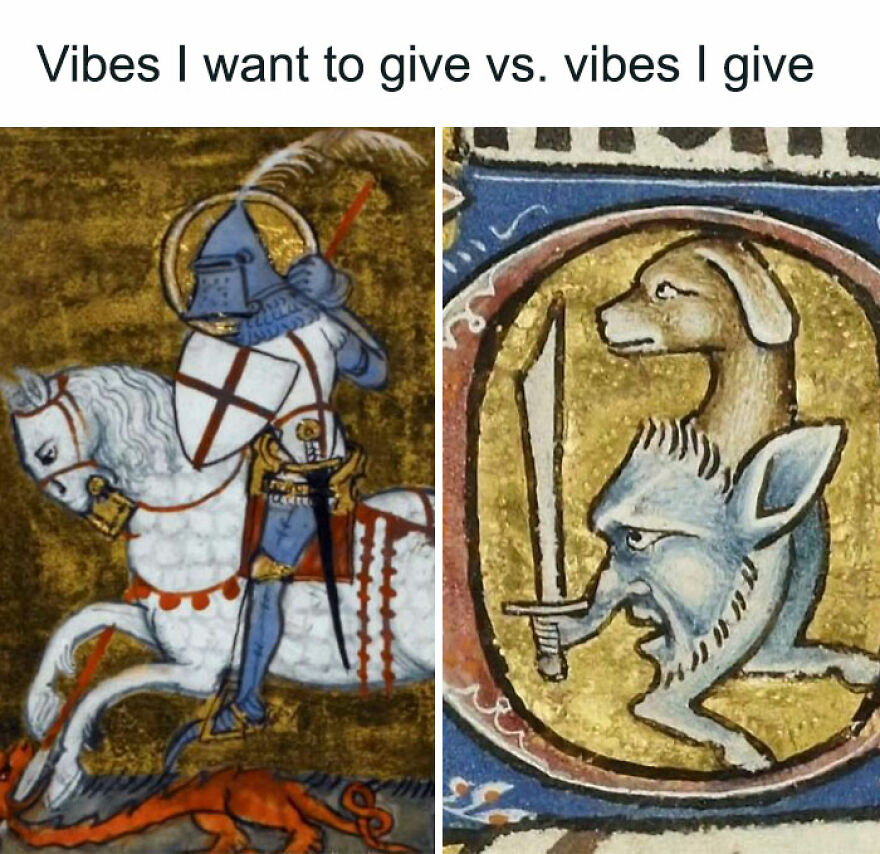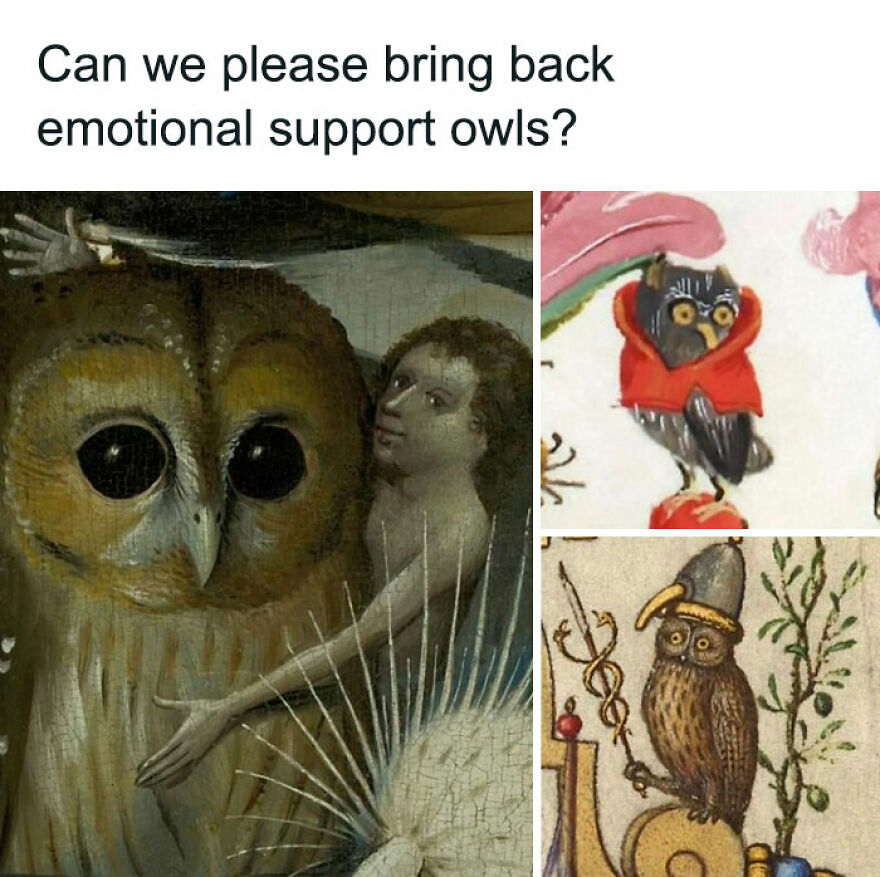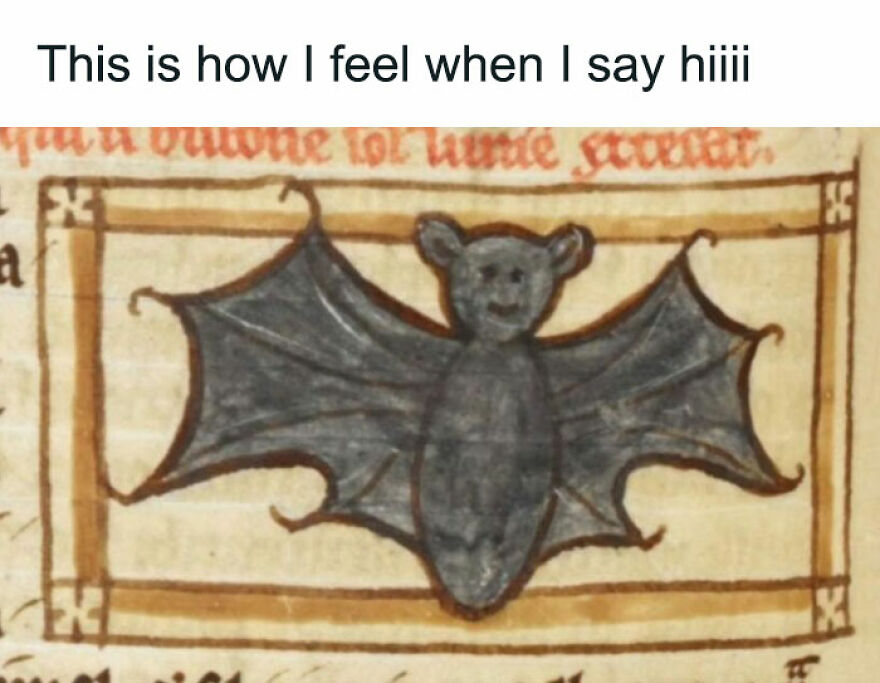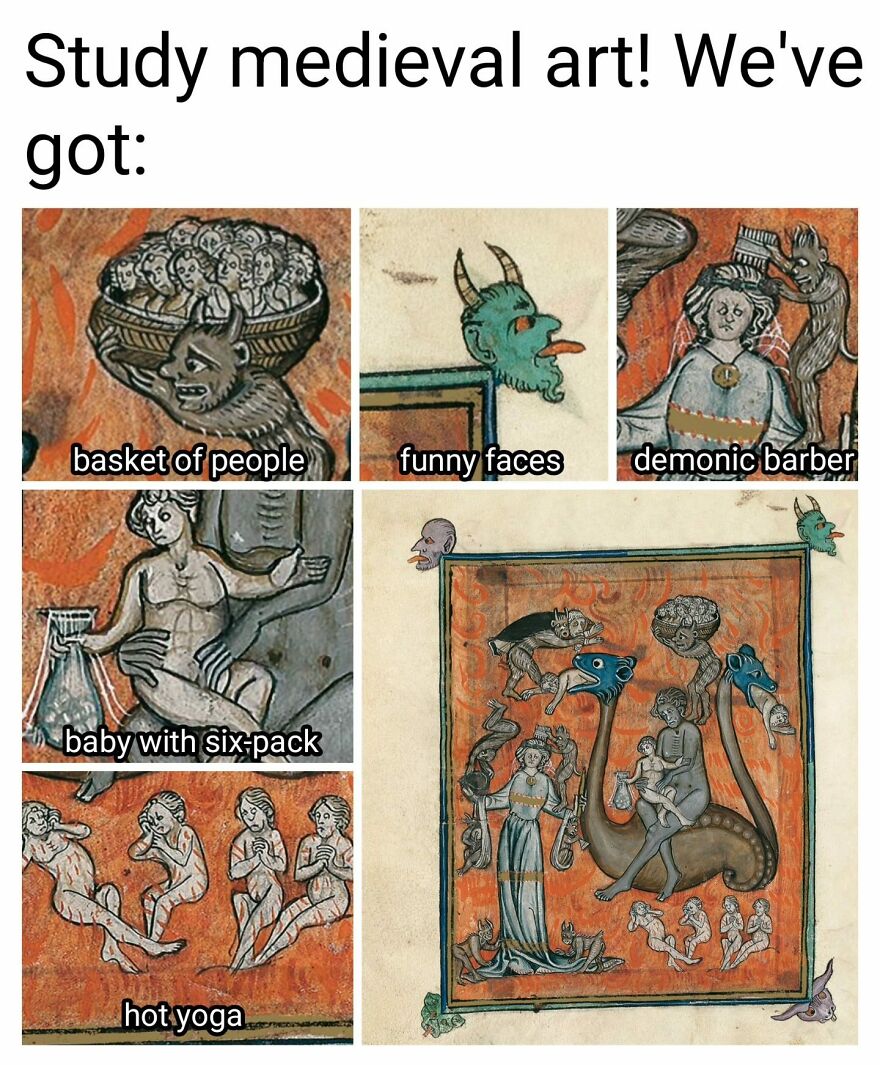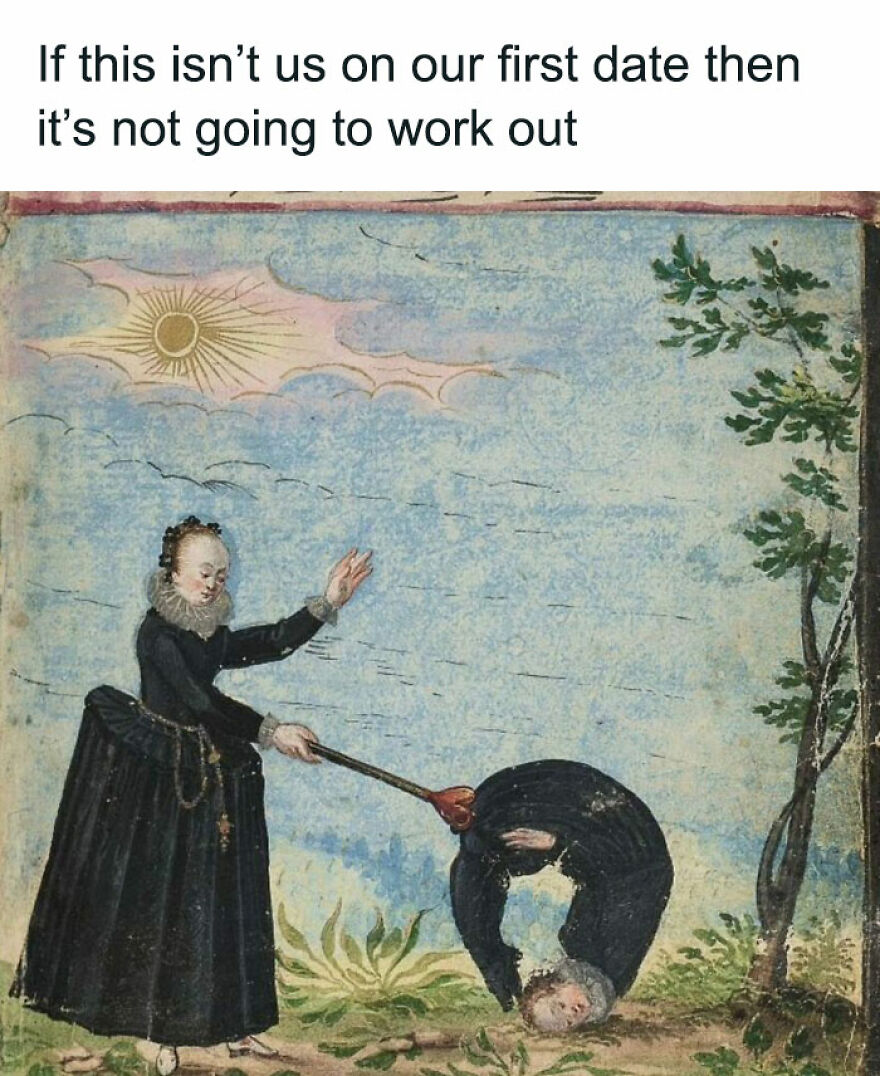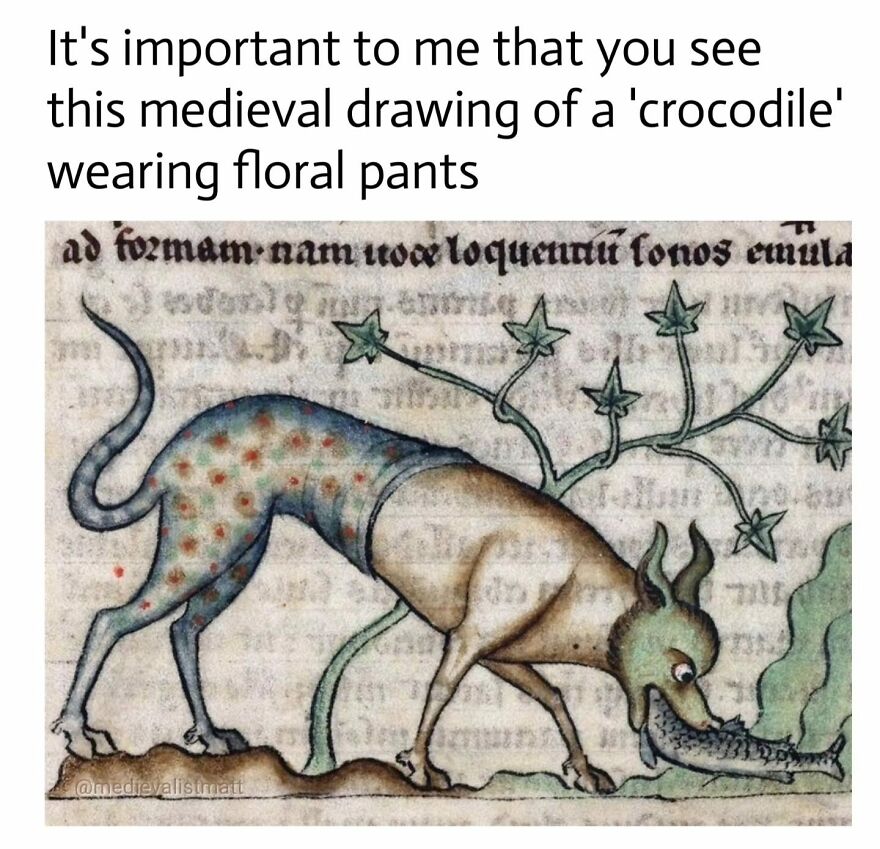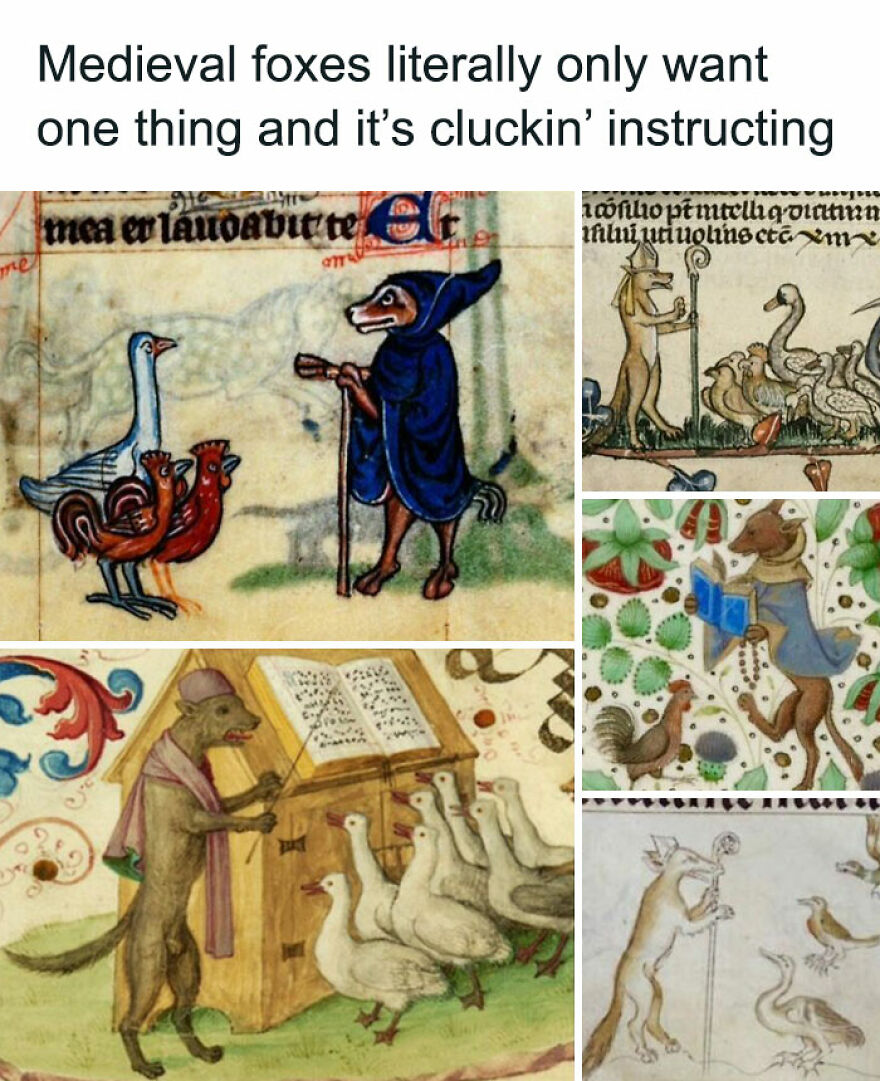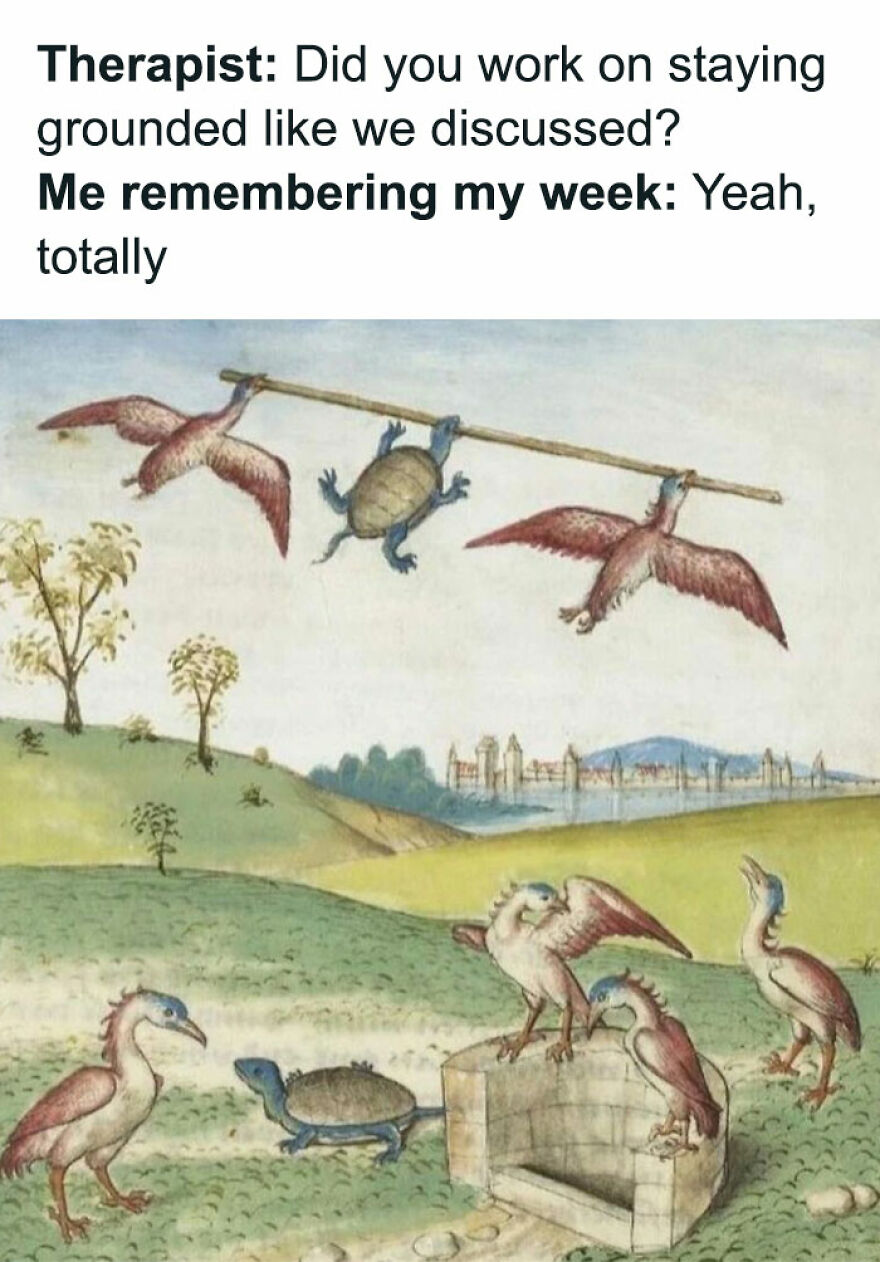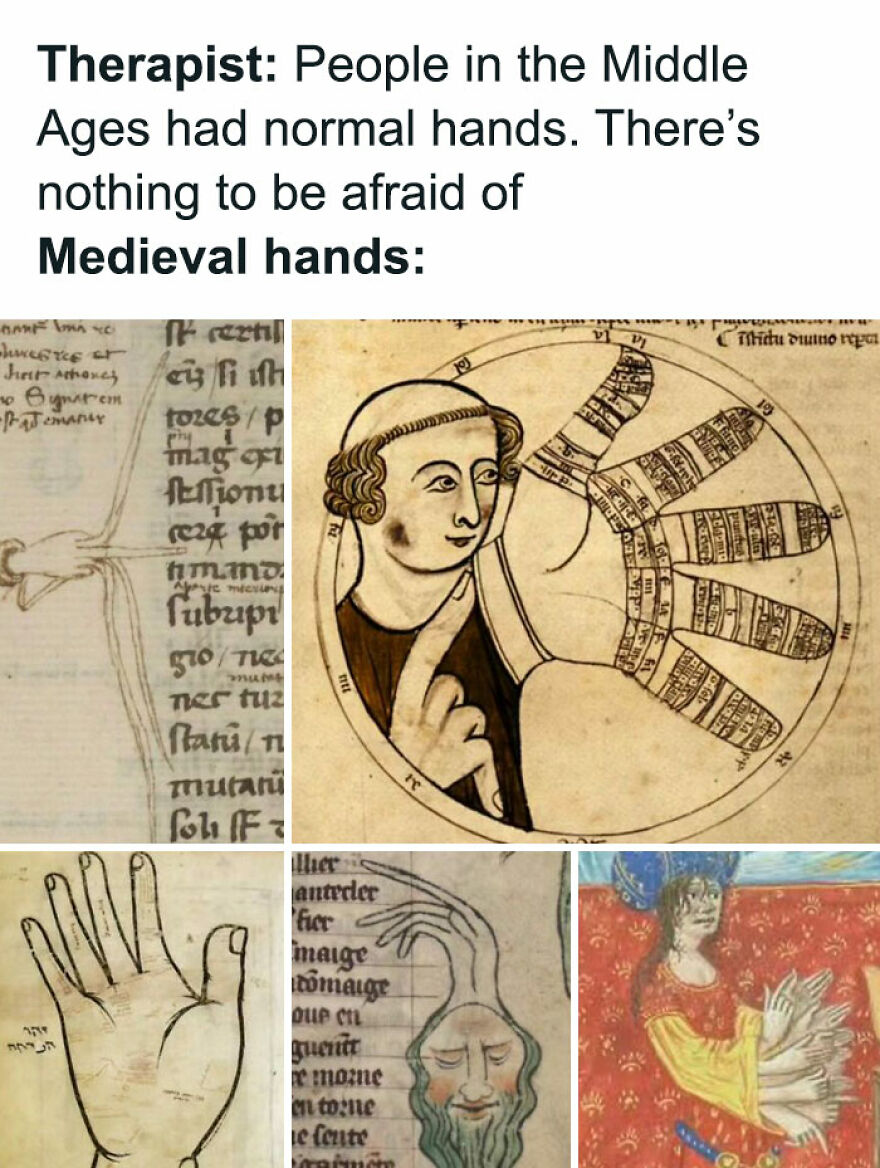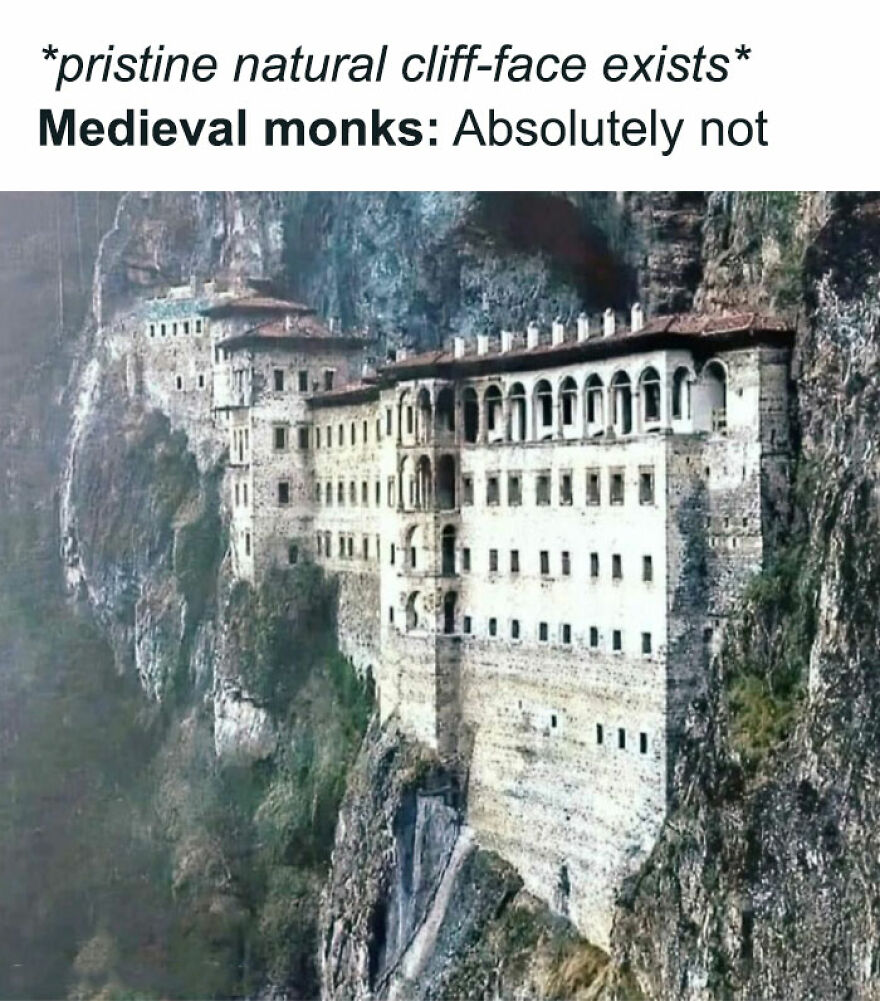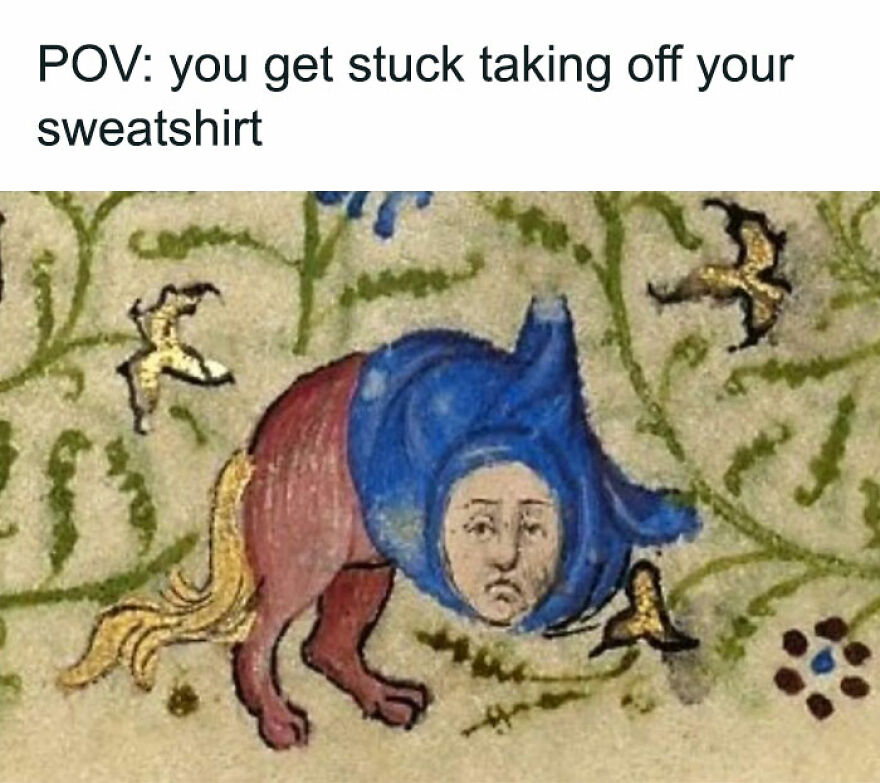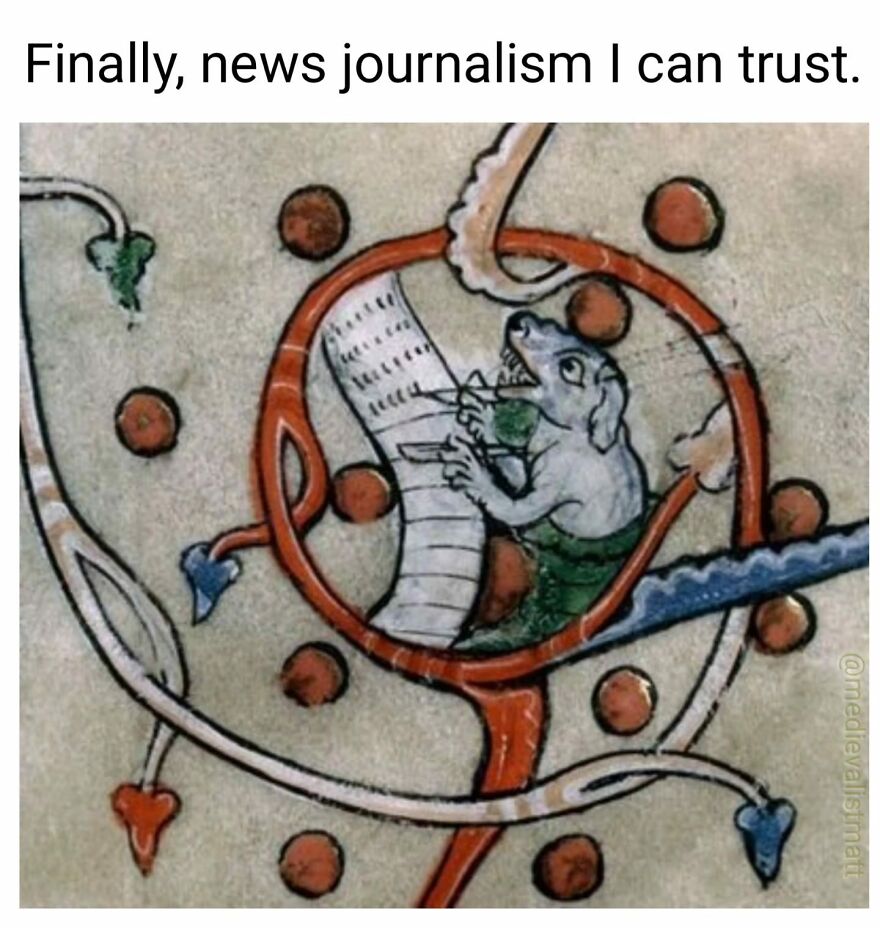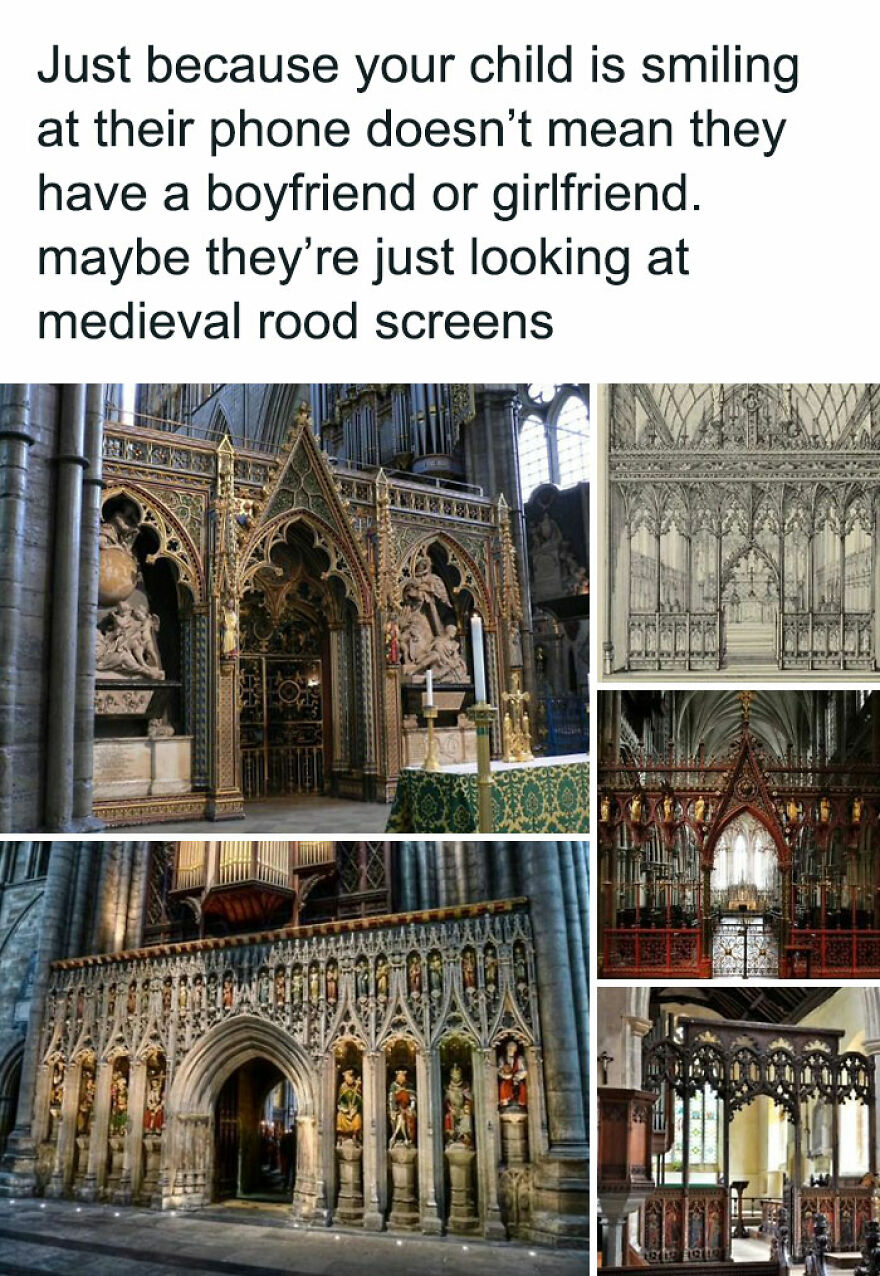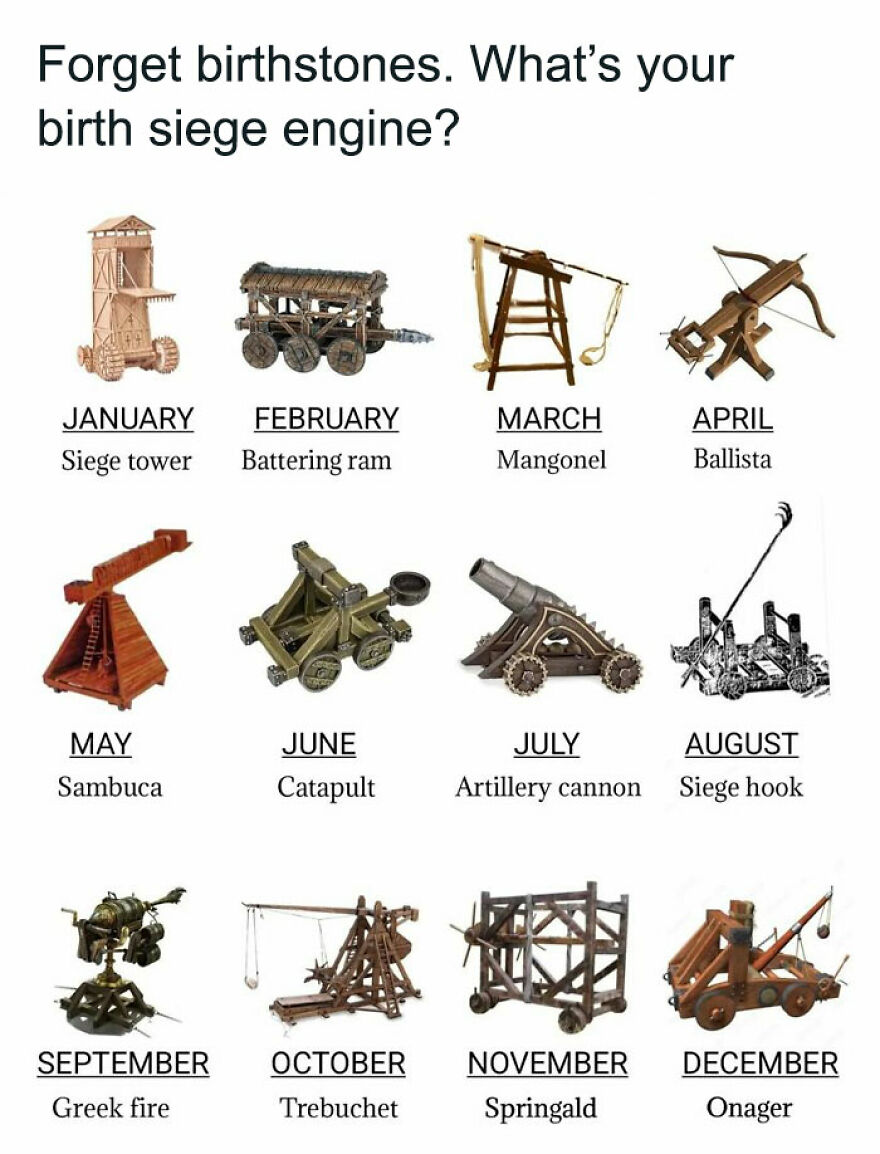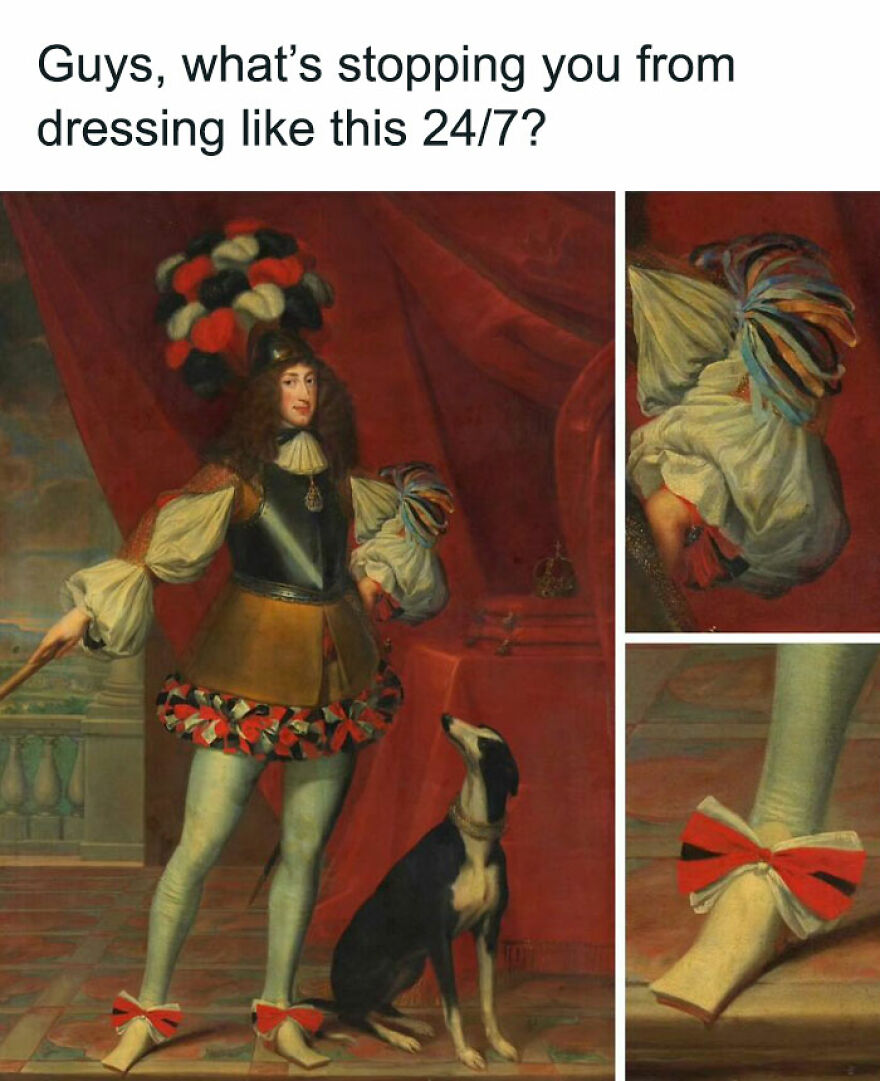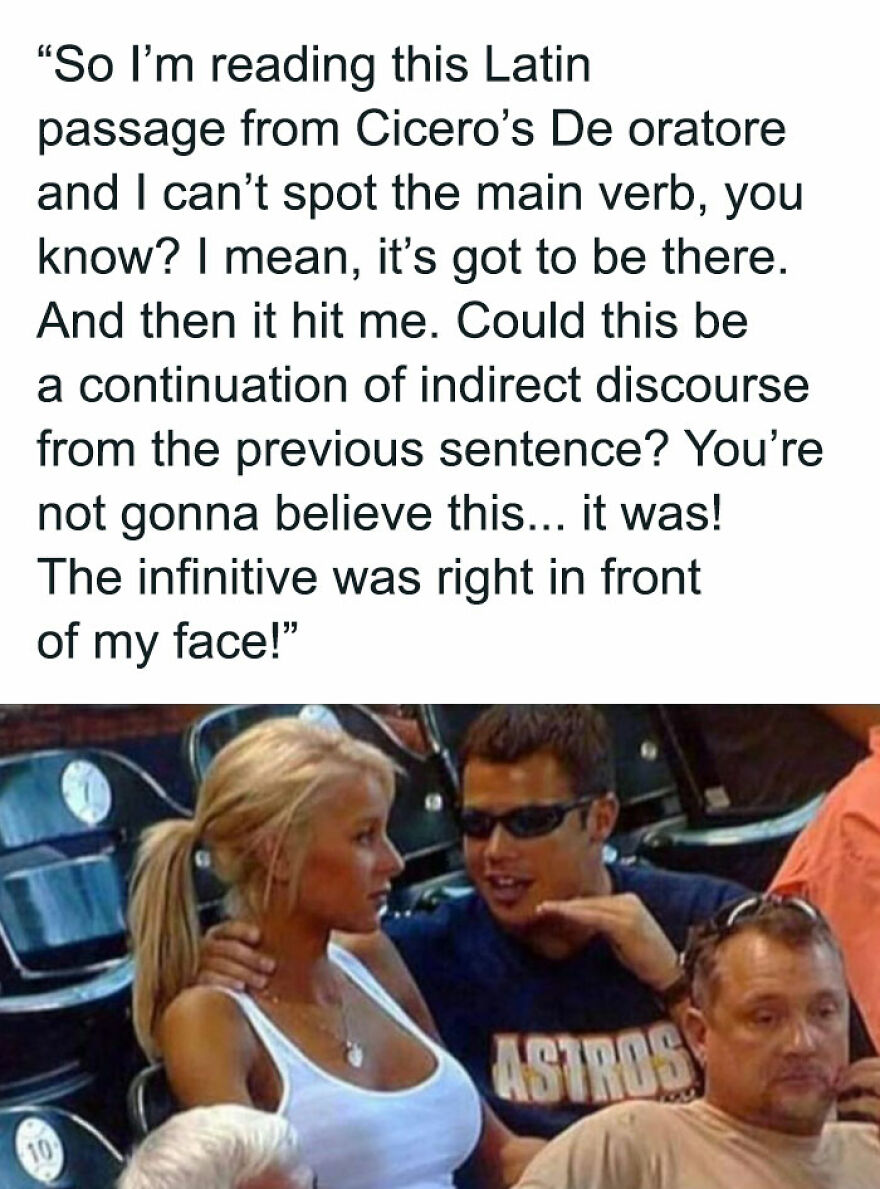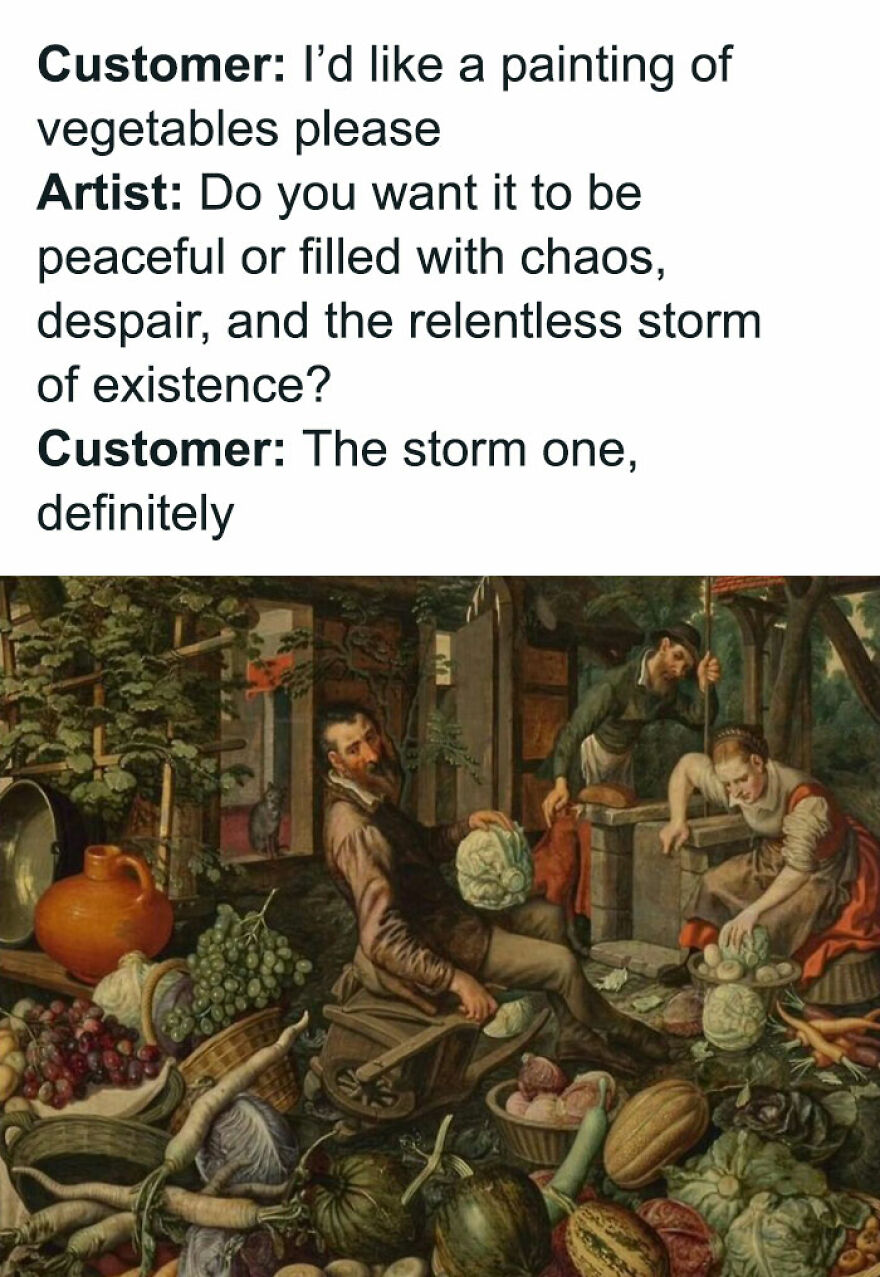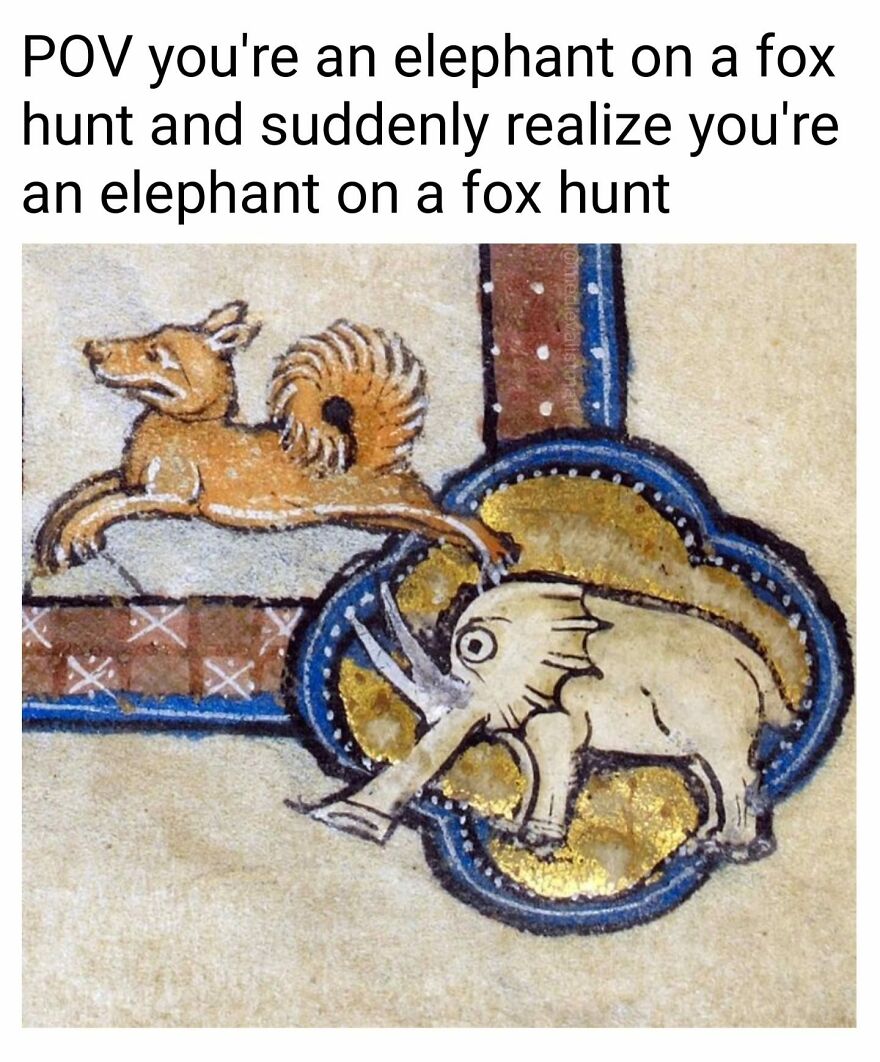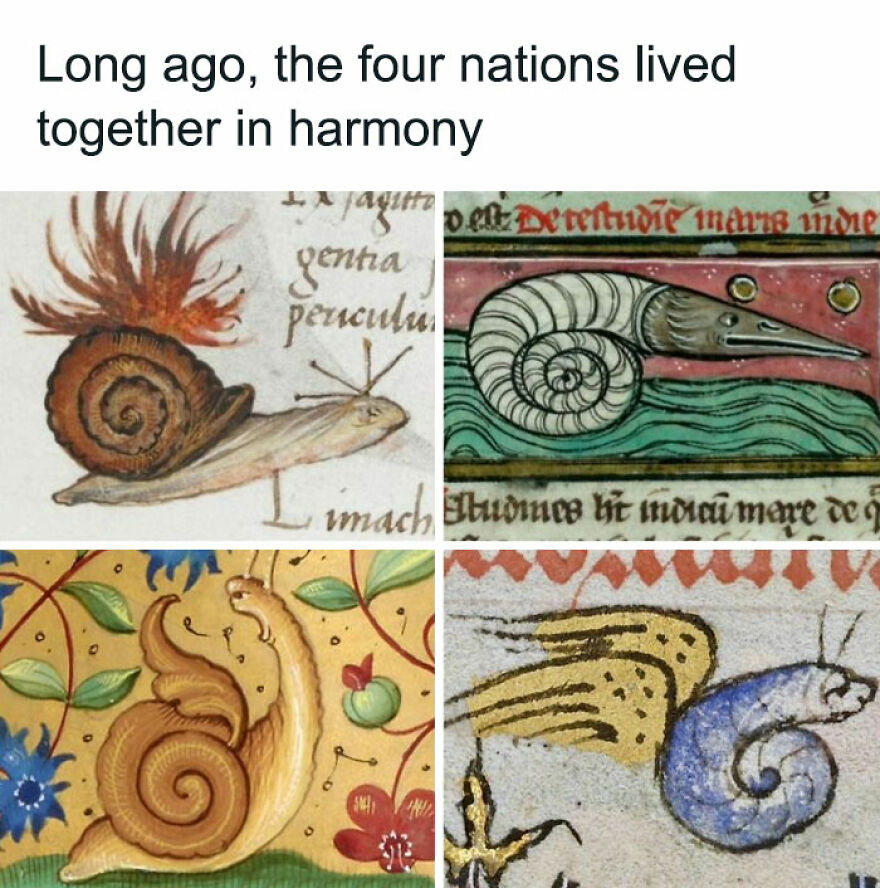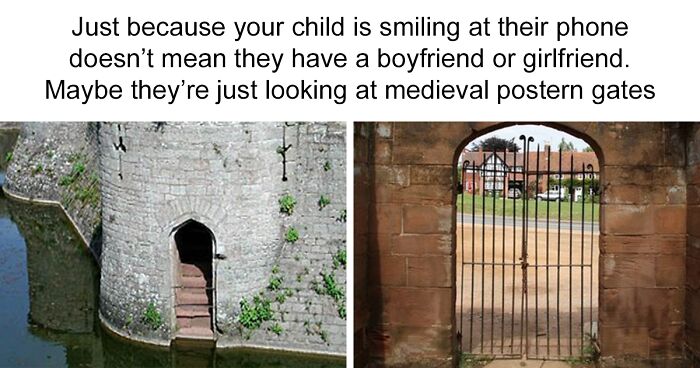
People Are Cracking Up At These 50 Medieval Memes Made By A History Professor
Interview With AuthorWhile memes might seem synonymous with modern life in general and the internet in particular, they are just one of the ways we try to encapsulate a feeling or mood in something that's easy to share. But truth be told, our ancestors were not that different from us in many ways.
The “Medievalist Matt” Instagram page is dedicated to everything from interesting facts to hilarious and relatable memes. We got in touch with its admin and creator, Matthew Ponesse, Professor of History at Ohio Dominican University, to learn more. So get comfortable as you scroll through, upvote your favorites and be sure to share your own thoughts in the comments section below.
This post may include affiliate links.
Bored Panda got in touch with Matthew Ponesse, Professor of History at Ohio Dominican University who created and still runs the page. Given that it has thousands and thousands of followers, we wanted to hear his opinion on what makes it so popular.
“I think humor is the main attraction. There is so much stress and anxiety in our daily lives. I think my page offers a bit of relief from the daily challenges that we all face. Secondly, the nature of communication has changed drastically in the last decade. People value memes not only as a source of entertainment, but for how they respond to current events or social phenomena.”
There was a whole lotta weird şhït goin' on in those medieval times...
“Memes provide a light-hearted or irreverent commentary on the issues of our day. I try to stay on top of current affairs and cultural changes, and occasionally respond to them through my memes. Lastly, I think people are fascinated by the unknown. There is much about the Middle Ages that people are unfamiliar with. When brought into contact with our culture, medieval ideas and images can appear bizarre, strange, and hilarious, especially when taken out of context.”
Naturally, we wanted to hear more about why he chose to focus on the Medieval ages in particular. “When I was younger, I was fascinated by the differences of medieval life. Castles and knights, serfs and peasants, pilgrims and heretics. It all seemed so fantastic and otherworldly. However, as I came to learn about the Middle Ages, I began to notice how very little humans have changed over time.”
“We still ponder the same questions, cultivate the same ambitions, and attempt to overcome the same challenges. Now, I take delight in how familiar it all is. Perhaps this is why my memes are relatively successful. I approach medieval art as a reflection of our own world. I may exaggerate the connections at times, or perhaps see things that are clearly not intended. But my motivation is to connect the past and the present in a meaningful way.”
Many of us have a picture of what the Medieval ages were like, but it’s generally a mishmash of outdated ideas and Hollywood cliches, so we wanted to hear some common misconceptions Matthew has encountered when it comes to the past. “The greatest misconception I have encountered is that the medieval period was a dark age characterized by ignorance, superstition, chronic warfare, abusive leaders, and a church opposed to new ideas and progress.”
“When you study the Middle Ages, you can’t help but appreciate the vitality of its peoples and the richness of their cultures. This was a dynamic time filled with growth, innovation, and scientific advancement,” he shared with Bored Panda.
They probably weren't in surprise when saw platypus the first time. The guy might be even - see, told ya, but not, you didn't believe me.
“Cities flourished, cathedral spires reached the sky, scholars advanced our understanding of the world, and merchants and traders flourished. True, there was war and disease. Yes, injustice occurred (as it continues to today). But characterizing the Middle Ages as a time of darkness misses the real story.”
He had a few last thoughts. “People sometimes tell me that a particular meme made them laugh out loud in an inappropriate place like a doctor’s office or a meeting, and that the whole room turned to look at them strangely. I just want everyone to know that I consider this greatest compliment.”
The one in the bottom right is suddenly realizing that he has forgotten to turn off the stove
Conversely, to remember the parts of modern building designs, just remember the acronym BLOC: Big Lump Of Concrete
These are artistic remderings of the expression: If the fox preaches the passion (about the suffering of Jesus) farmer watch your chickens. Meaning if a bad persons starts acting all holy, you better watch out.
Something tells me that - if they had the ability to produce movies in medieval times - all this creative imagination would at least save them from the monotony of seeing the SAME freaking movies remade every five to ten years. It's like most people today just gave up and decided "f**k originality"... let's just stick with what we know.
This is just Hollywood. The same 3 or 4 conglomerates investing the GDP of a small nation want to make sure not to offend anyone, and to please everyone.
Load More Replies...The medieval Christians believed every animal represented aspects of human existence. So moral messages in the marginalia of texts. Many look bizarre as they most likely were drawing based on descriptions of animals they'd never seen. Others based on folk tales etc. There are some wonderful bestiary blogs out there which describe this better than I can.
I would love to know what some of these symbolise. It must have been so obvious back then. To give a modern day example, I've just watched s4e5 of Slow Horses, in which Roddy Ho has a sprig of mistletoe hanging over his computer chair. It is never referenced, and to many cultures would be utterly meaningless. But it tells us the time of year, very specifically, and also **a lot** about Roddy Ho. So obvious when you know. I imagine using things like the rabbits or snails is a short cut to saying stuff, but has got lost in the mists of time.
"Snails were recognised in medieval times for their unusual strength, given that they were able to carry their home on their back. Confrontation with a snail, therefore, could represent a test of personal strength as well as mental fortitude. Once, the snail became a creature to be hunted down and destroyed in a display of strength and bravery." Imagine going on a snail hunt!
Load More Replies...When I was a kid, one of the local TV stations would play the Beatles animated movie "Yellow Submarine" every New Year's Eve. After having seen these pictures, it seems much less trippy now...
If I had to guess, it would be total, screaming boredom. Their daily routine would have been very regimented, and spending all of those hours copying their books would have been mind numbing. At least the dudes who did the gardening got to be outside.
Load More Replies...Something tells me that - if they had the ability to produce movies in medieval times - all this creative imagination would at least save them from the monotony of seeing the SAME freaking movies remade every five to ten years. It's like most people today just gave up and decided "f**k originality"... let's just stick with what we know.
This is just Hollywood. The same 3 or 4 conglomerates investing the GDP of a small nation want to make sure not to offend anyone, and to please everyone.
Load More Replies...The medieval Christians believed every animal represented aspects of human existence. So moral messages in the marginalia of texts. Many look bizarre as they most likely were drawing based on descriptions of animals they'd never seen. Others based on folk tales etc. There are some wonderful bestiary blogs out there which describe this better than I can.
I would love to know what some of these symbolise. It must have been so obvious back then. To give a modern day example, I've just watched s4e5 of Slow Horses, in which Roddy Ho has a sprig of mistletoe hanging over his computer chair. It is never referenced, and to many cultures would be utterly meaningless. But it tells us the time of year, very specifically, and also **a lot** about Roddy Ho. So obvious when you know. I imagine using things like the rabbits or snails is a short cut to saying stuff, but has got lost in the mists of time.
"Snails were recognised in medieval times for their unusual strength, given that they were able to carry their home on their back. Confrontation with a snail, therefore, could represent a test of personal strength as well as mental fortitude. Once, the snail became a creature to be hunted down and destroyed in a display of strength and bravery." Imagine going on a snail hunt!
Load More Replies...When I was a kid, one of the local TV stations would play the Beatles animated movie "Yellow Submarine" every New Year's Eve. After having seen these pictures, it seems much less trippy now...
If I had to guess, it would be total, screaming boredom. Their daily routine would have been very regimented, and spending all of those hours copying their books would have been mind numbing. At least the dudes who did the gardening got to be outside.
Load More Replies...
 Dark Mode
Dark Mode 

 No fees, cancel anytime
No fees, cancel anytime 












